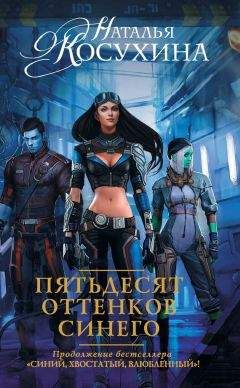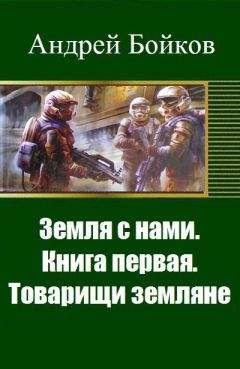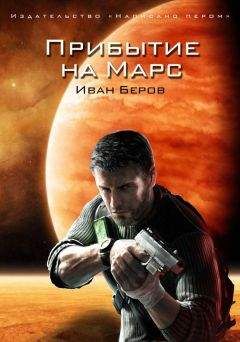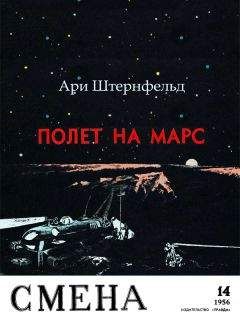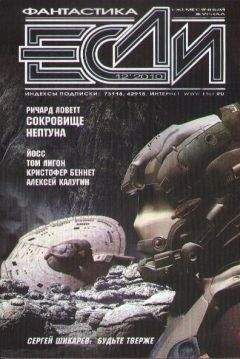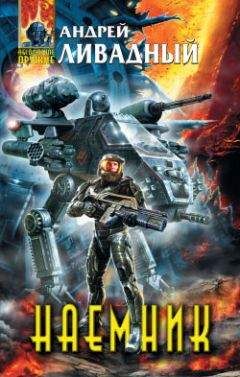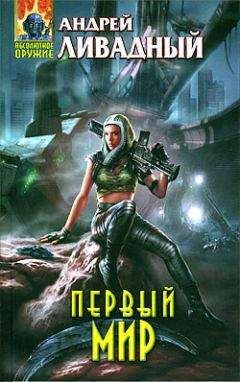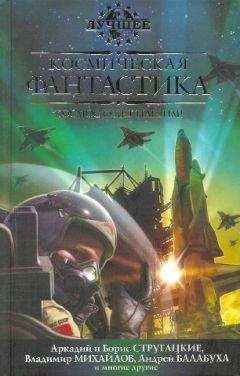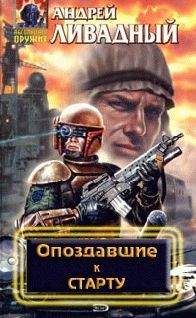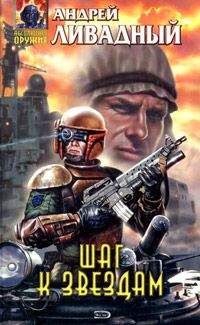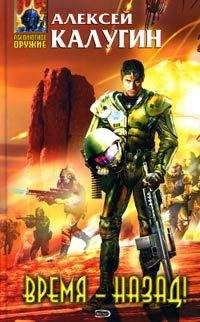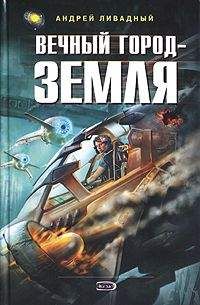Андрей Меньшутин - Последние тайны СССР – Проект Марс 88
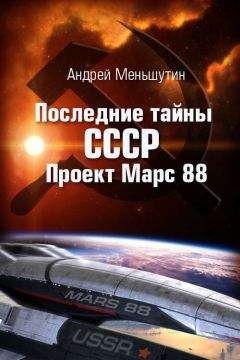
Все авторские права соблюдены. Напишите нам, если Вы не согласны.
Описание книги "Последние тайны СССР – Проект Марс 88"
Описание и краткое содержание "Последние тайны СССР – Проект Марс 88" читать бесплатно онлайн.
Много было в СССР полигонов: Плесецк и Сары-Шаган, Байконур и Капустин Яр, Cемипалатинск и Новая Земля. Всех и не перечислишь. По большому счету: вся огромная страна под названием СССР была одним единым – ПОЛИГОНОМ. Полигон – это почти всегда создание, освоение и испытание чего-то нового, движение вперед. Посвящается: Всем прошедшим полигон…
You know, it’s sad… The beginning of 20th century was the golden age of poetry as an art, but now it’s gone… There is poetry and there are poets, but there is no art, and I am afraid there will not be, he said thoughtfully.
All right, Andrey, we have held a social event, even though between us, now let’s go and do something for the society, – said Sveta.
-5-
At the beginning of 70s USSR officially rejected a manned flight to Mars, concentrating on interplanetary automatic stations.…
There were surely many variants of a manned flight to Mars, but they were developed in a more optional way, as a long-term perspective.
The coordinator analyzed both national and western projects, taking something from them and adding something new.
So he decided to do without unnecessary fuss of preparation for the flight, the flight itself and the rest.
The plan was quite simple: secretly prepare an expedition to Mars, fly there, take as many samples as possible and return.
And then, having analyzed the information and the samples, announce unintentionally: we have recently returned from Mars and received very interesting results which we will soon reveal…
It seemed like a simple and ordinary affair, it was day-to-day work in terms of USSR – well, the Russians flew to Mars and came back… It’s almost the same for us as for some people, especially in the West, to go to a restaurant or the nearest Disneyland.
The effect would surely be stunning. Even though Andropov was not very enthusiastic about the space, he imagined the possible effect and so agreed to this expensive expedition.
But the expedition turned out to cost much cheaper than the preliminary estimates.
The living modules were based on those nearly prepared for the Mir station, the only difference was a larger size, and the majority of equipment and devices was practically the same.
The rocket was the almost standard Molnia-M, with a new double body and just two stages instead of three to four used as usual.
A part of materials and technologies was taken from the well-known rocket СС 18 which terrified the Americans… They even invented such a name for it that I’d better refrain from saying it out loud.
Both bodies were composite ones, containing different materials, and the structure of the bodies was no less complicated than the whole of MS 88 taken together…
Almost half of the outer body of the spaceship consisted of different layers, each of which protected the crew from something special, and that’s why it was created. All these layers had been used somewhere or were just being elaborated and finished.
That’s why all the institutes that worked on the materials for MS 88 had associations with tanks, planes and submarines.
-6-
The farther was MS 88 going into space, the more often Andrey remembered the launch site. It was the last thing he saw on Earth, so he recollected it best of all; moreover, he worked and lived there for almost a year and a half…
More and more often he got the impression that the Launch site was alive. It had its own peculiar atmosphere. However, all the numerous objects, military units and launch sites were surrounded by the taiga, and when you drove several kilometers from them, and sometimes even one or two hundred meters, you found yourself absolutely on your own. Just taiga and silence surrounded you…
But you felt there was somebody else around you, and there were a lot of them – tens of thousands of servicemen and civil employees working on the launch site, and among the endless number of silent trees around you there was a feeling of an invisible presence of people united by one goal.
On many roads that connected almost 2 000 objects scattered all over the launch site, there was round-the-clock movement of cars and buses of all types and sizes, construction and military equipment… A car going past you made you feel that you are not alone, but when it drove away, loneliness surrounded you from all sides again.
The atmosphere of the launch site was absolutely unique and incommunicable. It can probably happen only on our numerous earthly cosmodromes. Each rocket and its multiple parts, components, devices, systems, materials were the results of work of hundreds of design offices and scientific and research institutes, thousands of enterprises and hundreds of thousands of people scattered all over the huge country.
And all that was delivered, brought and concentrated on the launch site. The launch site gave a final touch to all that, checked and tried it many times in accordance with numerous technologies and rules, until the final and probably the most important stage came – rocket launch, for which the Launch site was created.
But the launch site – it’s not only hundreds of thousands of tons of concrete, steel, integration buildings, launch grounds and a long list of parts that make it up: these are just instruments. The main thing is people working there, so the launch site is really alive…
Considering the schedule of launches which was the most intense on Earth, the working environment in the many-thousand team of the launch site was quite tense… It probably reflected on the northern nature surrounding it, and it produced the atmosphere which was nothing like any other cosmodrome on Earth.
While they are flying, the launch site could have launched a good hundred of rockets with satellites and research craft to the Moon, Venus or Mars. Some rockets are still in the integration house, some are already on launch grounds, some are being delivered, and some are being assembled on plants. But sooner or later they will meet in the place from which they started – on the launch site.
The word “cosmodrome” was not very widely used then, rocket engineers had their own terms and designations, and other military units had theirs. But most of them called it all simply a launch site.
Probably some part of him, Andrey, as well as the whole crew, remained there, and they took some part of the atmosphere with them…
It was a place where you could meet representatives of practically any kind and service arms available in the USSR Armed Forces. It was probably just sailors and paratroopers that Andrey did not meet there… but probably they were there but just he did not encounter them? And access was given not everywhere on the launch site, but only to those related to direct duties.
And very often, based on the specific character of a regular program or project, officers wore shoulder straps and collar patches of the service arms they were not connected with in any way. Only a few people knew what exactly they were doing at the launch site, and curiosity was not welcomed there.
It was Andrey’s colleagues, KGB officers, who “loved” and probably just had to change their uniforms. These were the representatives of the Special Department of the launch site. There were a lot of units, so the staff was just as diverse in quantity: there were small units of communications men that contained several dozens of people and separate battalions, regiments and brigades which contained thousands of soldiers and officers.
Practically nobody wore the uniform of a KGB officer: if you are posted to rocket engineers, wear the same uniform, any uniform except for the real one.
Somehow Andrey liked visiting the airfield most of all. It was located a little aside from most other military units of the launch site and lived its own independent life, and a part of it was surely subjected to the launch site as a whole.
The checkpoint was located just near the wing, the staff office of the barracks, the club and the dining hall were lost among birch trees… There were surely a lot of evergreens in the taiga, a lot of mixed vegetation, and birch thickets were not that frequent. Maybe that was the reason why the wing seemed so homely and comfortable and people were attracted here?
The pilots were not the most secret part of the launch site, that’s why there was no fence around the unit. The pilots themselves lived in the cosmodrome’s main camp. The wing and its barracks accommodated soldiers from two assigned separate support battalions, as well as the soldiers included directly in the separate wing.
There was quite a comfortable club with a large audience hall and quite a big screen where movies were shown at weekends. In the other part of the club there was a good gym where soldiers from the regiment and battalions sometimes played volleyball.
The acquaintance with the life of taiga pilots happened all of a sudden. There was still some time before another board was to be met, so Andrey left the ordinary military offroader near the checkpoint and went out to walk among the birches. The road bifurcated to barracks and staff office of the regiment. On a small drill field there was a row of a dozen soldiers or officers – a usual work formation or instructions before the shift.
The soldiers of the air regiment were dressed probably best of all at the launch site. One could rarely see them in ordinary uniforms. In summer they wore summer technical clothes: a dark blue cap, a light and comfortable jacket with pockets and slacks of the same color, and the main thing – they wore light and comfortable low shoes on elastic and comfortable soles, almost like trainers, instead of tarpaulin boots with foot wraps as indispensable attributes.
In autumn they had to put on boots, cold-proof bib overalls, a demi-season jacket with a cold-proof hood that could be worn in a pocket on the back. All these clothes were almost black.
In winter, when the temperature often fell to minus 30–4 °C°, they wore felt boots and thick, warm and long overalls that reached the neck. As for outdoor clothing, they wore a very thick jacket of very warm material with a tied lining of good well-dressed sheepskin. There was also a huge collar of beaver lamb which rose above the head with a hat on it, which could be fastened if necessary.
Above all that you could also put on a thick and warm hood with dog fur, and when it was especially cold, there was a knitted helmet with holes for the eyes. Moreover, all that was put on over two sets of underwear – cold (summer) and warm (winter), and then there were semi-woolen peg-top trousers with a service coat, and then the rest.
This is not like knight’s armor, but quite heavy; however, you will not be afraid of cold or wind. There were also thick and warm mittens of the same natural sheepskin with leather inserts on the palm; they were long and had lapels of different kinds – white, blue, even orange. Soldiers liked to put them in the pockets of the jacket or overalls, so that these bright lapels could be seen against the background of the rest – the jet blue uniform.
All changes of seasons and uniforms of the soldiers from the air regiment assigned to the launch site stuck in the memory by themselves.
It was summer, and soldiers were wearing the lightest summer technical uniform. A little aside, a senior lieutenant was walking; he seemed to be here by change and to bear no relation to what was going on. In his hands he was turning a long chain with keys and in the form of a pendant, with about five cartridges to the modernized Kalashnikov gun, but all of these were shining as if chrome-plated.
Andrey felt that it was his colleague by the department, came up and shook his hand. Pilots had somewhat strange pendants… The colleague laughed and said that these were the amusements of local demo bees: they found cartridges somewhere and polished them with sand paper in their free time. The trick was that the cartridges in arms rooms were strictly accounted, and it was hard to imagine where they took these.
They started talking, Igor turned out to be a landsman, and they got on more familiar terms.
Pilots and technicians finish their working shift soon, and they are going to play volleyball. Shall we join them? – Igor suggested.
Let’s try, said Andrey. And where’s the ground? – It’s near the airfield, we can cut through the forest. Soldiers trod paths to every quarters, Igor answered.
There were at least ten paths from the asphalted part of the air regiment’s camp to all cardinal points. There was taiga everywhere, and you could get lost in ten meters from separate buildings of the camp. However, one could see the high control tower of the airfield.
Igor selected the path leading to the left, and soon they crossed an asphalt road that ran almost parallel the airfield: one could see massive АN-12 cargo aircraft from it.
The path divided into three again, but one could already see the ground with a row of houses on wheels (shelters), a hangar with almost unneeded, cumbersome plane parts that were probably written off, and a smoke room in the form of a large covered octagonal pergola. The volleyball ground was located not far from it.
Everything was painted green, just the white volleyball net stood out. A technician sometimes went out of the shelters that merged with the forest, and it could seem from afar that some wood spirits appear from nowhere…
By the end of the working day soldiers from different groups appeared one by one, carrying testing equipment and instruments. The whole plane – all its components and systems – were divided among three to four groups, each of them had its own shelter on wheels which served as a storeroom for parts and a small workshop for small and quick repairs.
The attitude to instruments in the aviation is special, a forgotten screwdriver or pliers could get anywhere during the take-off and height gain: into the elements of elevators or ailerons control system, into the gear leg; vibration or rolling motion could make any forgotten screwdriver to move somewhere, and it could result in a plane crash.
So when technicians and mechanics were leaving the shelter to provide servicing to planes, they checked the availability of the whole set of instruments, after they worked with the planes – checked again, and then again when returning to the shelter.
If there was a shortage, almost the whole squadron started to look for the missing instruments. No plane could take off until the screwdriver was found. There surely were such cases, but they were quite rare and the instruments were quickly found. At best, the guilty one got off with a few extra duties.
But once a young soldier forgot all the instruments at once on the plane, the whole iron case. It was found in less than five minutes, but the whole squadron where it happened flipped! Nobody remembered anything like that – forgetting all at once…
Moreover all the instruments were branded: they contained eight or ten digits, the first two stood for the last two digits of the unit number, two more – the service group number, then the number of instrument on the list and something else. If these were, for example, pliers or nippers, the brand was put on both parts.
This topic was the theme of numerous jokes. Each AN-12, besides a lot of different equipment, contained an ordinary broom with a long handle, used to remove snow from the plane where it was difficult to reach or to sweep inside the plane, and there was also a whisk broom. But the ordinary broom was used more often.
Once several technicians were sitting in a spacious smoking room after dinner. A chief of regiment staff – the half colonel – came in. His position did not imply flying, it was more of a bureaucratic character, for there were a lot of papers, plans and reports in the regiment. The chief was always bemused about something, and this time, too, he was thinking about something connected with his service, smoking a Belomor cigarette…
Подписывайтесь на наши страницы в социальных сетях.
Будьте в курсе последних книжных новинок, комментируйте, обсуждайте. Мы ждём Вас!
Похожие книги на "Последние тайны СССР – Проект Марс 88"
Книги похожие на "Последние тайны СССР – Проект Марс 88" читать онлайн или скачать бесплатно полные версии.
Мы рекомендуем Вам зарегистрироваться либо войти на сайт под своим именем.
Отзывы о "Андрей Меньшутин - Последние тайны СССР – Проект Марс 88"
Отзывы читателей о книге "Последние тайны СССР – Проект Марс 88", комментарии и мнения людей о произведении.






